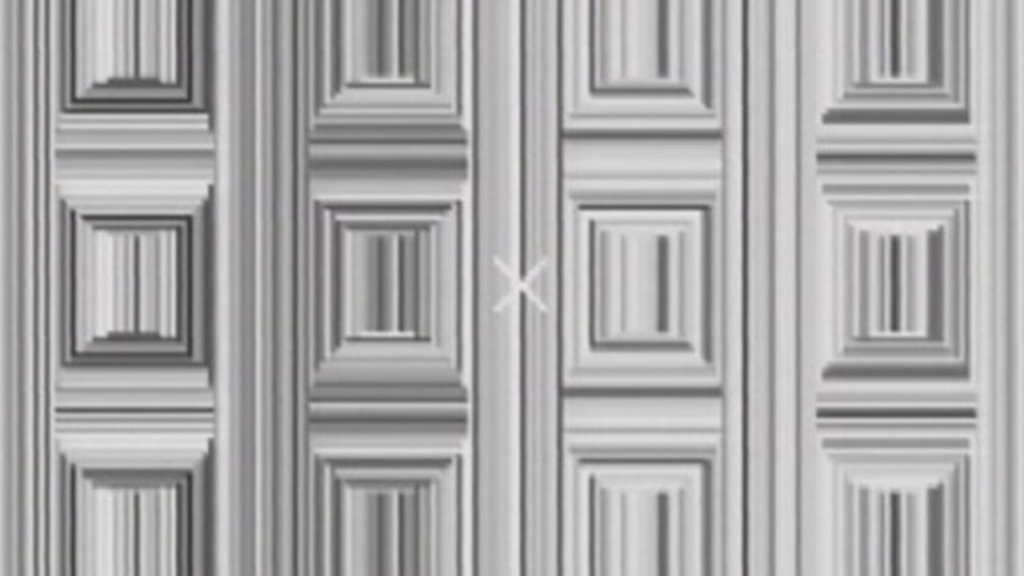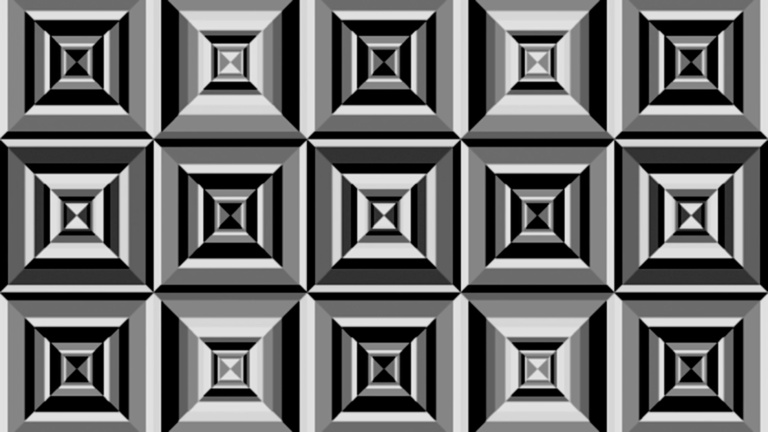Optical illusions have fascinated humans for centuries, challenging our perceptions and intriguing our minds. The coffer illusion stands out as a particularly captivating example. This article delves into the science behind the coffer illusion, explores its potential benefits, and examines why such illusions continue to mesmerize us. By understanding the mechanisms and implications of optical illusions, we can appreciate the complexity of our visual system and the fascinating interplay between reality and perception.
Understanding the Coffer Illusion
The coffer illusion is a visual phenomenon in which a series of rectangular or square shapes appear to transform into circles or arches when viewed from different perspectives or when focus shifts. Like many others, this illusion tricks our brain’s ability to process visual information. At first glance, the image may seem straightforward, but as you look closer, the hidden elements reveal themselves, challenging your initial perception.
The coffer illusion, created by Anthony Norcia in 2006, is a prime example of how simple geometric patterns can easily deceive our brains. The illusion consists of a grid of rectangles that appear to form a series of circles when viewed in a particular way. This effect is achieved through the strategic arrangement of lines and the brain’s tendency to group elements into familiar shapes. The coffer illusion exemplifies how our visual system can be manipulated, providing insight into the complex processes underlying perception.
The Science Behind Optical Illusions
Optical illusions like the coffer illusion occur because of how our brains interpret visual information. Our visual system is designed to process vast amounts of data quickly and efficiently, often relying on shortcuts and assumptions to make sense of the world. These shortcuts, known as heuristics, are generally effective but can sometimes lead to errors in perception.
In the case of the coffer illusion, our brains are tricked by the arrangement of lines and shapes, leading us to see circles where none exist. This occurs because our visual system tends to group nearby elements into familiar patterns, a process known as perceptual grouping. When we see a series of lines arranged in a particular way, our brains automatically fill in the gaps to create a coherent image, even if that image does not accurately reflect reality.

Additionally, optical illusions exploit the brain’s reliance on context and past experiences to interpret visual information. The coffer illusion takes advantage of our tendency to see continuous shapes and patterns, prompting us to perceive circles within the grid of rectangles. This interplay between expectation and reality highlights visual perception’s complexities and our brains’ remarkable adaptability.
The Benefits of Studying Optical Illusions
Studying optical illusions like the coffer illusion offers several benefits, from advancing our understanding of human perception to developing practical applications in various fields. Here are some key advantages:
Enhancing Cognitive Research
Optical illusions provide valuable insights into the workings of the human brain and visual system. By studying how and why these illusions occur, researchers can better understand the cognitive processes involved in perception. This knowledge can inform various fields, including psychology, neuroscience, and artificial intelligence, leading to advances in visual recognition, machine learning, and human-computer interaction.
Improving Visual Art and Design
Artists and designers can leverage the principles of optical illusions to create visually striking and engaging works. Understanding how the brain interprets visual information allows creators to play with perception, creating images that captivate and challenge viewers. With its ability to transform simple geometric patterns into complex shapes, the coffer illusion is an excellent example of how these principles can be applied in artistic and design contexts.
Enhancing Educational Tools
Optical illusions can serve as practical educational tools, helping to teach concepts related to visual perception, cognitive psychology, and neuroscience. By demonstrating how easily the brain can be tricked, illusions like the coffer illusion can make abstract concepts more tangible and accessible to students. This approach can foster a deeper appreciation for the intricacies of human perception and encourage critical thinking skills.
Informing Clinical Applications
Understanding optical illusions can also have practical applications in clinical settings. For example, studying how the brain processes visual information can improve diagnostic tools and treatment strategies for visual and cognitive disorders. Additionally, optical illusions can be used in therapeutic contexts to help patients improve their perceptual abilities and cognitive function.

Why Optical Illusions Fascinate Us
Optical illusions captivate us because they challenge our understanding of reality and reveal the limitations of our perceptual systems. Like many other illusions, the coffer illusion forces us to question what we see and consider the processes behind our perceptions. This cognitive dissonance, the clash between expectation and reality, can be both unsettling and intriguing.
Moreover, optical illusions tap into our curiosity and desire to solve puzzles. When confronted with an illusion, we are driven to figure out how it works and why our brains are being tricked. This sense of curiosity and satisfaction from unraveling the mystery behind an illusion can be gratifying.
Finally, optical illusions remind us of the remarkable complexity and adaptability of the human brain. Our ability to interpret vast amounts of visual information, often with incredible accuracy, is a testament to the sophisticated nature of our cognitive processes. By exploring how our brains can be deceived, we gain a greater appreciation for the intricacies of human perception and the dynamic interplay between reality and our interpretation of it.
Conclusion
The coffer illusion, with its intriguing interplay of geometric shapes and perceptual tricks, is a powerful example of the complexities of visual perception. By studying optical illusions, we can gain valuable insights into the workings of the human brain, enhance various fields such as art, design, and education, and develop practical applications in clinical settings. Ultimately, optical illusions like the coffer illusion remind us of our visual system’s remarkable adaptability and sophistication, inviting us to explore the fascinating world of perception and the mysteries that lie within.
Do Read: Discovering Noel J. Mickelson: Career Highlights, Financial Success, and Early Life Stories
